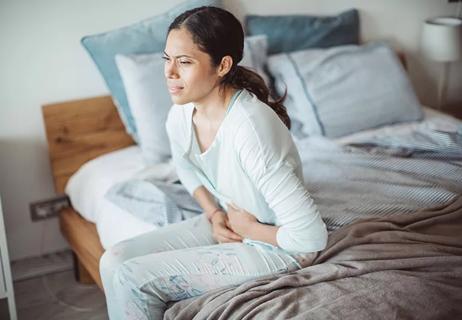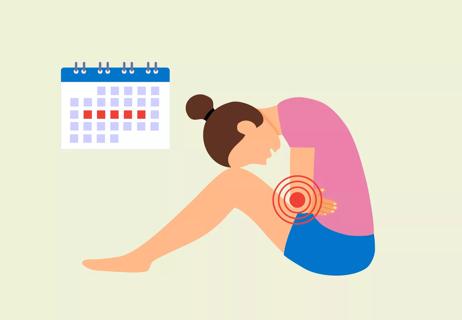5 things to know about the signs of endometriosis

Endometriosis, a gynecological condition affecting the lower abdomen or pelvic area, has a reputation for being super painful. You might assume that if you had it, you’d know it.
Advertisement
Cleveland Clinic is a non-profit academic medical center. Advertising on our site helps support our mission. We do not endorse non-Cleveland Clinic products or services. Policy
Or would you? Maybe not. This common condition doesn’t always make itself known with red flags and flashing lights.
We talked to reproductive endocrinologist Marjan Attaran, MD, to find out what women should know about the signs and symptoms of endometriosis.
1. Period pain is the biggest clue
Endometriosis occurs when tissue similar to the tissue that lines the uterus go rogue, growing in places they don’t belong. Those endometrial-like cells can glom onto the ovaries, fallopian tubes or intestine. During your period, those tissues bleed, which may trigger pain and swelling.
“The classic symptom of endometriosis is terrible period pain that doesn’t go away with birth control pills or anti-inflammatory medications like ibuprofen,” Dr. Attaran says. But not all women with endometriosis have horrible cramps. And not all women with horrible cramps have endometriosis. Intense period pain is a tip-off, not a smoking gun.
2. Endometriosis pain can be fickle
Most often, endometriosis pain crops up low in the pelvis, Dr. Attaran says. But women can have very different experiences. Some describe the pain as sharp. Others experience a dull ache. Cramps might squeeze just one side of the pelvis, or both, or they might move from side to side. (See what we mean about fickle?)
Advertisement
3. Sex might hurt
Many women with endometriosis experience a “deep” pain during or after sex.
4. Stomach problems are common
If cramping wasn’t enough,women with endometriosis sometimes have digestive problems, too. These can include nausea, diarrhea, constipation or bloating, especially during that (least favorite) time of the month.
4. Some women have no symptoms
Just because you don’t have excruciating cramps during your period doesn’t mean you can rule out endo. Some women with the condition have mild symptoms, or even no symptoms at all, Dr. Attaran says.
The symptoms you experience often get worse over time. You might not see any signs until your late 20s, 30s or even 40s. “People don’t wake up one day with all of these symptoms,” she says. “They usually develop slowly as time goes by.”
5. Trouble getting pregnant
If you’ve tried unsuccessfully to get pregnant, mild endometriosis might be involved.
Diagnosing endometriosis would be a lot easier if there were red flags. But for many women, it’s more of a gray area. “It’s a frustrating disease,” Dr. Attaran says. “But if you have symptoms, it’s worth following through to get the diagnosis so you can be active about managing the disease.”
Advertisement
Learn more about our editorial process.
Advertisement

The most comfortable sex positions minimize deep penetration

Endometriosis pain occurs where the disease develops in your body

Food is medicine when you’re dealing with endometriosis

Vaginal pain can be caused by infections, cysts or other conditions

Endometriosis, pelvic floor dysfunction and bladder issues can all contribute, but relief is within reach

Developmental changes like puberty and menopause can impact symptom severity

They can happen whether you’re having a period or not

From medications and stress to PCOS and STIs, there’s a wide range of reasons Aunt Flo may overstay her welcome

Type 2 diabetes isn’t inevitable with these dietary changes

Applying a hot or cold compress can help with pain